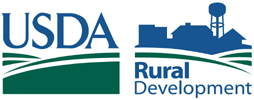  |
|
|
|
It is a great privilege to serve as the Administrator of Rural Housing and Community Facilities programs at USDA Rural Development. I have worked for over 25 years in community and economic development in rural America, and I know the critical role USDAs housing and community facilities programs play in creating wealth, expanding economic opportunity, and improving quality of life for rural residents. President Obama strongly believes that all Americans should have access to safe, decent, affordable housing. USDAs housing programs have a vital role to play in achieving the presidents vision in rural communities across the country, where housing needs are significant and where communities face unique challenges. I am committed to working tirelessly to improve our programs and expand their reach so that more and more Americans can benefit from housing opportunities provided through USDA. One of my top priorities as Administrator is to improve customer service delivery across our programs. I want individuals, lenders, non-profits, community organizations, and other groups to want to do business with USDA. You should know that our door is always open and that we will be a respectful, responsive partner. But improved customer service is not enough. I am committed to redoubling our efforts to reach people who live in areas that have historically been underserved by USDA Rural Development. A large part of this outreach effort will target very-low income residents residents who have traditionally made up a small portion of our borrowers, but who are in great need of assistance in finding quality, affordable housing in their communities. In an effort to reach
these potential borrowers, I recently launched the Single-Family Housing
Outreach Initiative. This program, funded through the American Recovery and
Reinvestment Act, will place about 30 loan specialists in persistent poverty
counties including the colonias along the U.S.-Mexico border
across the country where they will be tasked with originating new direct
home loans. This effort is the first step in reaching rural residents who
are most in need, and the experience we gain and the lessons we learn from
this initiative will improve our long-term efforts to reach these residents
consistently. Over the past year, I have had the great privilege of traveling to all corners of the country to meet with people on the ground in our nations rural communities. I have learned so much on these trips. While I cannot make it to every community, I hope to hear from community leaders, housing advocates, borrowers, lenders, and other interested individuals about how we can expand and improve our programs. Please send questions, comments and feedback to rhs@wdc.usda.gov or call my office at (202) 690-1533. Tammye H. Trevio
|